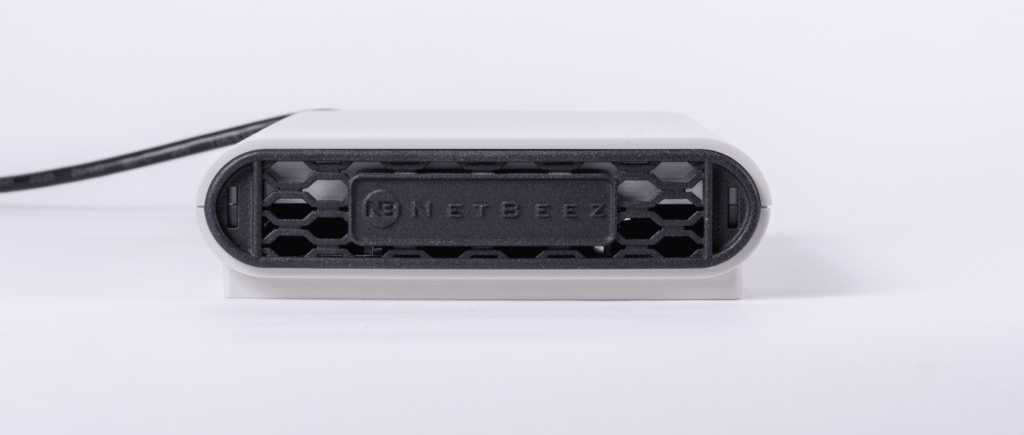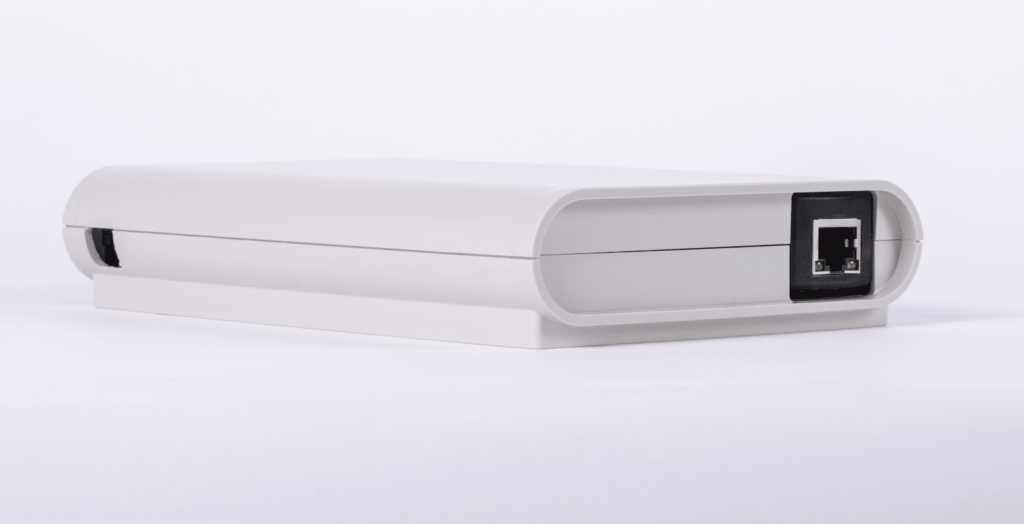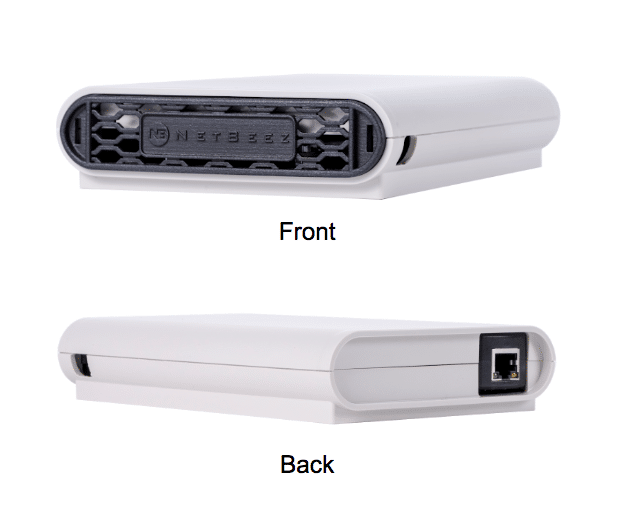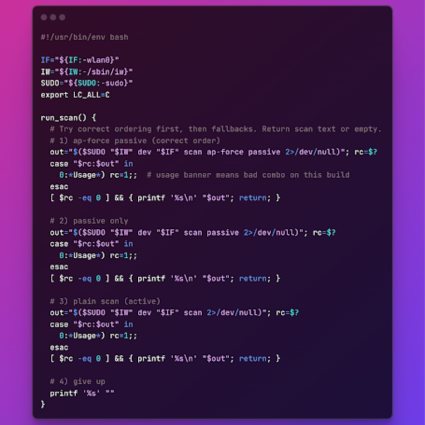In February, we released the new version of the NetBeez WiFi network monitoring sensor, also knowns as the ‘WiFi Beez’. What’s most exciting about this new version is that all of the hardware components are enclosed in a single, NetBeez-branded case. This case makes it easier for wireless engineers to deploy our WiFi monitoring sensor in an office, closet, or public area. Moreover, all WiFi sensors now come with an integrated Power-over-Ethernet (PoE) adapter.
What’s Inside the NetBeez WiFi Sensor?
From a component perspective, the new version of the WiFi Beez includes the Raspberry Pi 3B board, a 802.11ac WiFi dongle, 8GB of storage, and a PoE that conforms to the 802.3af standard. The WiFi Beez can be powered via the PoE interface or can use an external power supply, if the network doesn’t support PoE.
If you want to learn more about the new WiFi sensor’s hardware specs and features supported, please check out the latest Tech Specs sheet or the newly released 2019 WiFi Monitoring Guide.

Above, you can see the front pic of the new WiFi monitoring sensor. The front grill has the engraved NetBeez logo and wordmark.

This last photo shows the rear and side of the case. Two things stand out: on the left side of the case you can see the location where you plug-in the external power supply. On the right side of the photo, on the back of the case, you can see the PoE interface.
Based on your needs, the user can power the agent via the PoE interface or the external power supply. If you’re using the external power supply, the Ethernet connection will be only used for data transmission, to establish the control channel with the NetBeez dashboard.
Benefits of the NetBeez WiFi Sensor
Other than having all of the hardware parts in one place, the new NetBeez WiFi sensor gives both vendor and customer the flexibility to easily upgrade, or replace, internal components without having to buy new hardware. The single-board computer, the WiFi card, and the PoE dongle can be easily replaced, if necessary.
For example, an agent’s WiFi card can easily be upgraded from 802.11ac to 802.11ax. The same is true for the Raspberry Pi single-board computer that is included in the unit.
Although the new version of the Raspberry Pi 3B+ was released last year, we are still using the previous version (the 3B). Version 3B meets our requirements, and we are planning to support the 3B+ after further testing. Once the proper testing and integration is completed on our end, upgrading to new hardware is seamless.
Software Features Supported
From a software perspective, the new WiFi Beez supports the same feature set as the previous WiFi agent. If you are not familiar with NetBeez, here’s a short list of the most important functionalities that I’d like to mention:
- Report WiFi signal strength, link quality, and data rate for 2.4GHz and 5.0GHz
- Run real-time performance tests with ping, DNS, HTTP, and traceroute
- Network throughput via iperf, network speed tests, and VoIP traffic simulation
- SSID hopping to connect periodically to different SSIDs and alert on connectivity issues

Conclusion
The new NetBeez WiFi sensors are a step up for wireless engineers that want to monitor their WiFi service from the client’s perspective. This new WiFi Beez includes a 802.11ac adapter and Power-over-Ethernet option, all in one easy-to-deploy enclosure. Download the WiFi monitoring guide from the client perspective to learn more about its capabilities.





